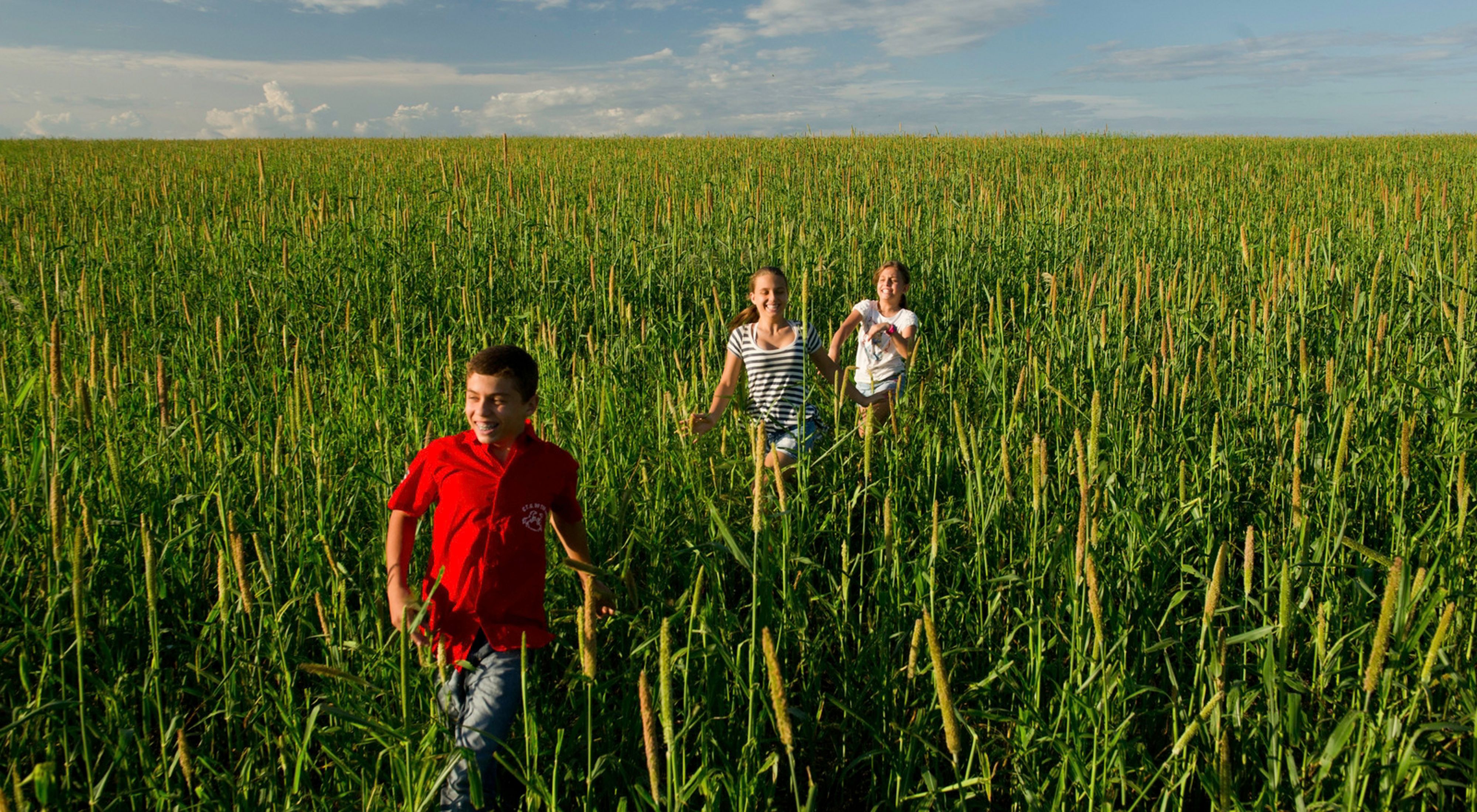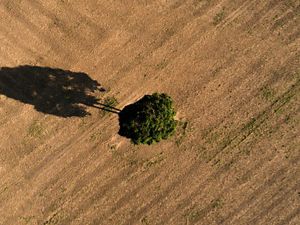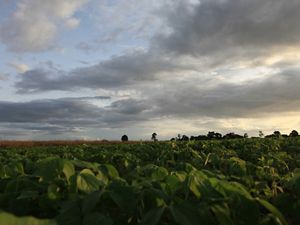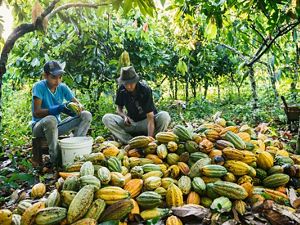Brazil: A Playground Called Amazon
A family discovers together how to conserve - and have fun - in the largest rainforest of the world.
By Peri de Castro Dias
Quote: Bazilio Caroto
“I am certain that our attitude is an example for my children, that you can reconcile production and conservation.”
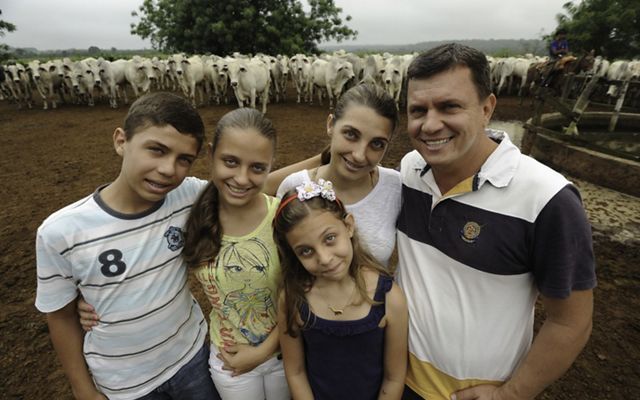
“Ow, ow, ow, ow, ow,” the sisters Nathália, age 15, and Wanessa, age 9 call out, in a hilarious and affectionate attempt to attract, with an enigmatic sound, a band of goats that wander haphazardly across a field on the family farm.
This is an ordinary vacation afternoon for the Carloto family children. The girls, along with their brother Daniel, age 13, spend most of their time out in the open, under the hot sun of Paragominas, a municipality in the Brazilian Amazon.
The farm is so well cared for that it seems like the setting for margarine commercials. At this point of the day, the children have already swum in the river, helped to care for the cattle and laughed at each other as they tried to ride a bull. Daniel, who loves life in the country, had to ask for his father’s help to climb onto the beast, which was far too big for him, but, once on top, he balanced himself well and struck a cowboy pose.
A “macaw-dog” in the garden
The play was interrupted when their mother called them for a snack. Fruits from trees that the children themselves planted in the family grove covered half of the table, on the verandah beside the house. Cirede, the children’s mother, served impressively good carambola juice as she smiled and pointed to a brightly colored macaw, which excitedly flew from tree to tree in an attempt to stay close to the family.
Mimosa the macaw lives free around the house and is one of the children’s pets. Faithful as a dog, she always tries to stay close by. She eats fruit directly from the family’s hands, and sometimes makes noises to draw attention.
“Mimosa is like a sister, she’s family,” says Nathália.
The Carloto children actually like the urban area of Paragominas, where they live and study. In the city are their friends, the computer, and television. They make no effort to hide, however, the fact that they would rather spend the day at the farm that supports the family, and it is easy to understand why. For these children, the Amazon is their backyard.
Generational differences
Bazilio, the children’s father, sometimes takes them around the forest areas that cover more than half of the farm, and are part of a pilot project for enriching vegetation, promoted by The Nature Conservancy (TNC) and supported by Fundo Vale and by the United States Agency for International Development (USAID). It is at that moment that it becomes most evident how much the life these children lead today is different whom what it would have been a decade ago.
Only ten years ago, it was unlikely that a father in Paragominas would think about showing something like this to his children. In fact, it would be hard for him to have anything to show, since the forests were being felled at a frantic rate. Restoring or enriching the jungle was simply not one of the concerns rural producers had on their minds.
Bazilio himself cleared 30% of his property for pastures and plantations, when he and Cirede moved from southern Brazil to Paragominas in 1997. That was how producers in the region acted, with the consent and even encouragement of the government.
“I bought the farm thinking about clearing all of the forest. I only stopped when the Forest Code policy took effect, because I wanted to be compliant with the law,” he says, referring to the reform of the rules defining limits for deforestation on private properties approved in 2000.
Radical reform
Even with that reform, few things changed in Paragominas. The municipality was in second place for deforestation in the Amazon, in the mid-1990s. The situation only changed when the government tightened enforcement and restricted access to credit by ranchers and farmers.
The community decided then that the municipality should grow in another manner. Governments, rural producers and organizations, among them TNC, came together to legalize the environmental situation for properties, enforce fulfillment of laws and seek economic alternatives that will help to create income and job opportunities that do not depend upon deforestation.
The united effort was a success. Paragominas was the first municipality in the country to get off the leading deforesters’ list, prepared annually by the Brazilian government, and became an official model for fighting deforestation that involves almost 100 municipalities, in an area the size of Texas and Colorado combined.
Doing something for the Amazon
The Carloto family showcases this new phase in Paragominas. Bazilio, the father, is working in partnership with TNC and with technicians from the University of São Paulo to plant fruit, medicinal and timber tree species that are native to the Amazon, in the middle of forest areas on the farm. The children accompany and participate in the whole effort. Together, they will cultivate an extra income source and will have financial backing to keep the forest standing.
This experience is part of the pilot project that will evaluate the best practices for forest restoration and vegetation enrichment in Paragominas. At the end of the project, TNC and its partners will produce a conservation primer for rural producers in the region. With that, efforts by families such as the Carlotos will gain scale and benefit an area much larger than that of the properties directly involved.
The parents' example is what counts
For Bazilio and Cirede, a concern for modeling respect for the environment is the best way of guaranteeing that the children will in fact understand the value of conservation.
“I am certain that our attitude is an example for my children, that you can reconcile production and conservation. I can see this consciousness in them; they already ask me not to cut the trees on the farm.” says Bazilio.
At the end of our conversation with the Carlotos, the feeling we had at first of being in a commercial gives way to another. Their property really is beautiful, their children are polite and seem very happy, but nothing here appeared out of nowhere. This family, as well as the whole community, are discovering together their own way of growing and of conserving which is essential for life.
